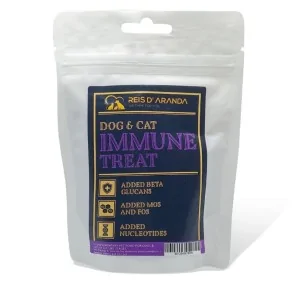Its name says it all: the Vienna blue rabbit comes from Austria. Not only is it beautiful with its shiny blue-grey...
FELINE INFLUENZA
INTRODUCTION
Cats, like humans, are prone to upper respiratory tract infections and ‘feline influenza’ is the generic name for this disease in the feline world. It is important to know that it is not a zoonotic disease, i.e. it does not spread to humans.
WHAT IS FELINE INFLUENZA?
Feline respiratory complex is a very common disease, especially in places where there is a high concentration of felines such as catteries, veterinary clinics, shelters or multi-cat households. This condition can affect both the respiratory tract and the eyes of felines. It is an acute condition, caused by one or multiple pathogens, highly contagious and in some cases lethal.
In this complex, the main causative agents in 90% of cases are usually Feline Calicivirus (FVC) and Feline Herpesvirus 1 (HVF1), although occasionally some bacteria such as Bordetella bronchiseptica and Chlamydophila felis (formerly called Chlamydia psittaci var. felis) can also be added, which can originate or accompany the primary viral infection.
Feline influenza is a disease of high morbidity and low mortality, occurring mainly in animals younger than 6 months. Mortality is mainly due to pneumonia in immunocompromised patients.
SYMPTOMS OF FELINE INFLUENZA
The most frequent clinical signs may be
- Fever
- Sneezing
- Nasal-ocular discharge
- Conjunctivitis
- Loss of appetite and oral ulcers or cough (occasionally).
Loss of appetite may be related to the fever associated with the infection, to the discomfort in the oral cavity caused by FVC that prevents food from being taken, or may even be related to decreased ability to smell due to nasal secretions, as felines feed primarily on olfactory stimuli.
HOW IS FELINE INFLUENZA SPREAD?
Cats become infected through contact with other cats (or objects) that are actively infected and spreading the disease or with cats that are invisible ‘carriers’ of the virus. Unfortunately, due to the nature of the disease, once a cat is infected, it becomes a ‘carrier’. This means that it can shed viral (or less frequently bacterial) particles and spread the disease, even if it has not shown any clinical symptoms. The exact period of time for which he can harbour this ‘carrier’ state is not yet known, but it can last from weeks to years.
CAN FELINE INFLUENZA BE PREVENTED?
As always, the most recommended treatment for feline influenza is prevention, which is effective, easy to implement and safe. In all cases, vaccination is recommended for kittens from 9 weeks of age, with a second booster dose 3 to 4 weeks after the first dose and boosters every 1 to 2 years depending on the type of vaccine.
Current vaccines offer different options, generally offering protection against Feline Calicivirus, Feline Herpesvirus 1 and Feline Panleukopenia, sometimes these three core antigens can be combined with Feline Chlamydia felis and Feline Viral Leukaemia.
CONCLUSION
Vaccination and proper hygiene are the best forms of prevention. Systematic vaccination during the cat's infancy helps to strengthen the animal's immunity to infection. However, if the cat is already a carrier of one of the virus strains or has an active infection, vaccination will not be as effective. Managing stress, maintaining your cat's health and providing a complete and balanced diet are other key preventive measures to strengthen your cat's immune system and reduce the risk of disease.
Leave a comment
Log in to post comments
















